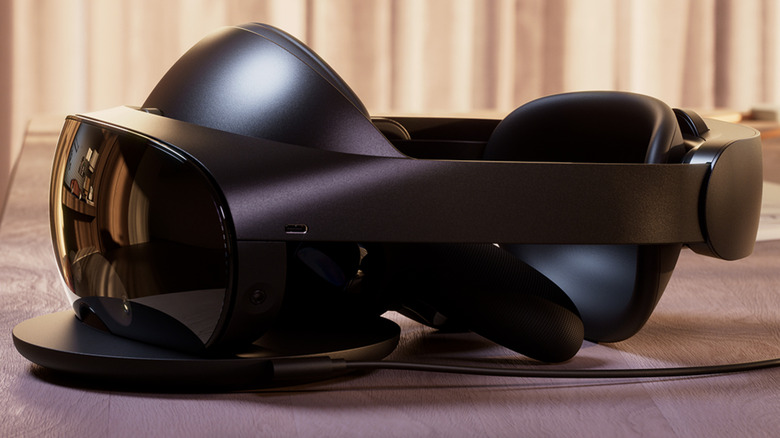Meta Quest Pro Is A High-End VR Headset With A Price Tag To Match
Meta has introduced its fancy new flagship VR headset, the Quest Pro. The latest metaverse gear from the company comes armed with 10 high-resolution sensors, five on each side of the curved glass enclosure. The biggest upgrade happens in the optics department, which features a custom-designed backlight system to deliver 75% higher contrast, according to the company.
The two LCD panels up front rely on local dimming tech and employ quantum dot technology to boost the color profile of on-screen content. Meta has also upped the resolution figures for the Quest Pro's screen, increasing the pixel density by 37% and packing in 10% more pixels for each degree of screen movement. Plus, there is more space for lens adjustment, alongside a new dial for more precise controls.
The peripheral vision has also been increased by 50%, which is quite a meaningful upgrade when it comes to offering more immersive experiences. Another major optical hardware upgrade is the pancake lens system, which replaces the traditional Fresnel lens array inside VR headsets. Working in tandem with 500 LED units that are all individually controlled, the pancake lens system folds light multiple times, allowing the lens array to take up 40% less space inside the headset body.
A high price for next-gen VR hardware
Facebook is charging $1,499.99 for the Quest Pro and it is already up for pre-orders from the official Meta online store, with a shipping date set for October 25. It will also be available from Best Buy and Amazon in North America. For that steep asking price, the Meta Quest Pro offers Qualcomm's next-gen Snapdragon XR2+ silicon.
The new platform is touted to offer a 50% jump in raw firepower alongside improved thermal management. The Qualcomm chip is paired with 12GB of RAM and 256GB of onboard storage. Meta's engineers have managed to cram a curved battery module at the back. The headset also comes with a new 45-watt charging dock sporting a USB-C interface, which can simultaneously charge the controllers, too.
Talking about controllers, the new Touch Pro controllers come armed with three sensors that are capable of tracking 3D spatial movements for apps. These are also compatible with the Quest 2 and will be sold as a standalone product later this year at $299.99 a pop. For folks shelling out $1,500 for the Quest Pro, the retail package will include the new controllers, stylus tips, partial light blockers to block surrounding light, and the charging dock.
Clearer visuals, sharper avatars, and legs
The world-facing cameras on the Meta Quest Pro can present four times more pixels in a frame, adding more details to the XR visuals. But most importantly, the Passthrough visuals are now in color instead of the black and white visuals offered on the standard Quest 2 VR headset. Meta calls it stereoscopic mixed reality Passthrough, but more than just adding colors, the feature also creates a 3D experience with realistic depth-of-field effects. Plus, users' personal avatars will soon have legs.
Meta has received a ton of flak in the past for choppy facial expressions of the virtual avatars that looked downright creepy. With the Quest Pro, Meta is deploying eye tracking and Natural Facial Expressions tech to create avatars that have more accurate facial rendering and improved expressions. As a measure of privacy, both of these features are left disabled by default. Once enabled, all of the details are stored locally on the headset with an auto-delete protocol. Meta also promises that none of the data is shared by third parties.
